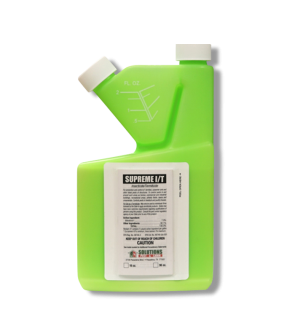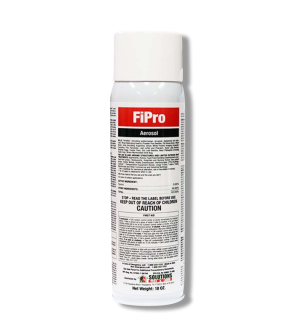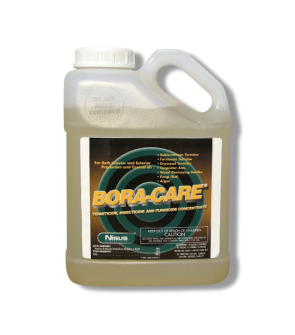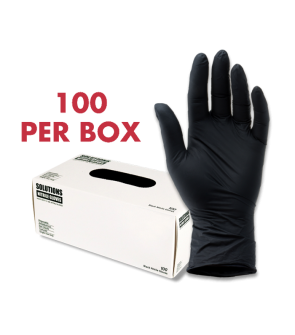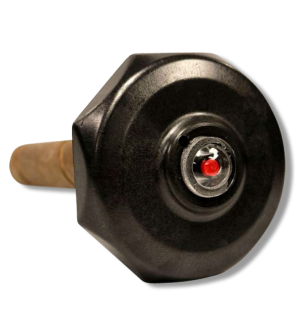Gain access to personalized product screening, the best pricing, rewards, and more!
Most Effective Products
How to Tell Apart Old Vs. New Termite Damage
This page is an expert DIY guide on differentiating old and new termite damages in homes. Follow this guide and use the recommended products and we guarantee you will control and prevent termites within your property.
When you see termite damage in or around your home, you may wonder if there is a current or past infestation of termites. A recent termite infestation is sometimes easier to notice due to swarming activity. However, older damages from termites are not always apparent to homeowners.
To find out for certain, here is a professional guide to spotting older and current termite damages. For either scenario, this article will provide easy-to-use products to aid in termite control.
What Does Old Termite Damage Look Like
An old termite infestation may not have the active signs, but that does not make it any less dangerous. There are specific telltale signs of old termite infestations.
No Signs of the Pest
Termites keep themselves well hidden in order to survive and, in many cases, are not detected until the damage is done. Termites will visibly damage the wooden parts of your home exterior first, but by the time you notice this, they may have made their way inside.
Depending on the species, they may create mud tubes along basement walls, the home's foundation, support beams, window frames, and wooden window or door frames. Eastern subterranean termites are the main culprits behind these as they move from the food source to the nest.
Other termite species, such as drywood termites, create galleries below the surface of the wood. If you remove the wood or it's exposed in a way, you will see large smooth tunnels connected by a series of smaller tunnels.
If you break these nests apart and find no signs of the adults or creamy white insects, which are often the worker stages of these pests, then there is no active infestation.
Be sure to observe if mud tubes are dry, as this may further suggest no active termite activity.
You can also try breaking the mud tubes and then observing them for a couple of days to see if it is repaired. If not, then this could be another sign that the termites are no longer present.
Hollow-Sounding Wood

If you hear this noise, it could be a sign of an older infestation or may pinpoint where the current infestation is more established.
Damaged Wood and Paint
As termites feed on the wood in homes, their damage can become apparent on the surface by causing the paint to become cracked, bubbled, or peel away. They may also cause small pinholes in wood.
Signs of damaged wood with discarded wings and droppings around the area may also indicate a non-active termite infestation.
What Does Active Termite Damage Look Like
There’s little doubt your structure is facing an active termite infestation if you see the insects themselves flying around outside or inside. If you do not see termites, there are other ways to tell if they are present.
Excrement

Drywood termites produce pelleted frass that looks like sawdust in appearance, whereas eastern subterranean termites use their frass to build mud tunnels.
Finding loose frass is a definite sign of an active termite infestation.
Fresh Mud Tubes and Galleries

Remember that eastern subterranean termites move from underground in the soil to wood through mud tubes. Breaking open a tube can show busy termites moving about, providing a visible sign of these pests.
If mud tubes are moist in appearance, this is also a clear sign of active termites. While moist or new mud tunnels lead to active infestations, don’t write off old dried tunnels either, as this may suggest an area where they can reinfest.
New Holes/Damage in Wood
Freshly bored pencil-thin holes or damages are another warning sign of active termites in and around your home. They create these pinholes or exit holes as a way to access new food sources or build nests unseen.
New termite feeding patterns may cause the wood to eventually appear crumbled or damaged, but it will still render the wood to be soft and lighter in color. Older wood will be brittle, weak in structure, and darker in color.
Do Termites Come Back to The Same Place Every Year
If you previously had termites or just recently treated them, then you may wonder if they can come back after treatment. Unfortunately, termites can reinfest your property if a chemical barrier is not created to discourage future pest activities.
What To Do If You See Termite Damage
First thing first, do not panic. Termites create structural damages slowly, but if your home has never been treated or treatments are not periodically made can cause some concern.
If you have termites currently or wish to prevent them, then follow these steps to remove them from your home.
Step 1: Apply Supreme IT Outdoors

Supreme IT is a 7.9% bifenthrin-based insecticide concentrate labeled to control over 70 pests, including termites. After this product has dried, it will create a 90-day residual, effectively killing any termites that contact treated areas.
Create a 6-inch wide and 6-inch deep trench around the base of your home's structure. Mix 5 fl. oz. of Supreme IT with 4.9 gallons of water in a 5-gallon bucket to have a 5 gallon emulsion.
Pour the mixture into the trench and immediately fill it back with dirt until it is turned into mud. Repeat the process for each 10-foot section of your structure until the entire perimeter of your home is covered.
For homeowners wishing to prevent termites after finding signs of older activity or those just keeping up with yearly prevention, we recommend a trench treatment and an outdoor barrier treatment.
For preventative treatments, reapply a trench treatment with Supreme IT every 2 1/2 to 3 years.
An outdoor barrier treatment on the foundation of your structure with Supreme IT is recommended every 90 days to prevent termites.
To apply Supreme IT as a perimeter treatment outdoors, mix 1 fl. oz. of product with 1 gallon of water to treat 1,000 sq. ft.
A perimeter treatment will be done by spraying 3 feet up the exterior foundation wall and 3 feet out on the ground next to it. Be sure to also spray around the window and door frame, soffits, eaves, joints, plumbing penetrations, and other cracks and crevices along the foundation.
Keep in mind that trench treatments do not need to be done each year for prevention and are mainly used for subterranean termite infestations.
If you decide to use another termiticide, you will need to follow your selected product label restrictions as most products can range in soil residual from 5-10 years or less.
Based on this information, you will find out in how many years to reapply trench treatments around your home.
Step 2: Install Termite Monitoring Stations

Once they ingest the wood inside of the station, the red eye disappears from on top of the product. When the red eye is gone this will alert you to present termite activity underground.
When you see this, you can eliminate them quickly with a ready-to-spray foam application of Fipro Foaming Aerosol in the station's injection port.
FiPro Foaming Aerosol is a non-repellent insecticide labeled to kill termites and has a foaming feature that can penetrate hard-to-treat areas where these pests can hide.
Step 3: Apply FiPro Foaming Aerosol Indoors

Simply apply the injection tube into cracks and crevices, slits, openings, and small holes in damaged wood. Hold the trigger for 5 to 10 seconds, release the trigger but keep the injection tube inside for another 5 seconds.
If needed, you can drill 1/16” holes every 12 inches for 10 feet of shamrock or drywall if termites are found in these areas.
Step 4: Treat Bare Wood with Bora-Care Termite Treatment
Bora-Care Termit Treatment is a borate-based insecticide, termiticide, and fungicide emulsifiable concentrate that protects wood from wood-destroying pests like termites.
For control of termites, apply 1 coat of 5:1 Bora-Care solution.
To achieve the 5:1 ratio, you will mix 5 gallons of hot water with 1 gallon of Bora-Care.
One gallon of solution will treat 200 square feet of floor area (subfloor, floor joists, header, and sill plates) or 50 linear feet of 8-foot high walls in basements and crawl spaces.
If the wood has 1 or 2 exposed sides, you may need to apply a second coat after the first treatment has dried.
For quicker control, apply an additional coat to heavily infested areas. Allow the first application to dry by waiting at least 20 minutes between applications.
Spray the exposed wood surface onto termite galleries, decay pockets, and other infested areas until fully saturated.
Apply only to bare wood or to wood surfaces where an intact water-repellent finish is not present.
Do not expose treated exterior wood surfaces to rain or snow for at least 48 hours after treatment. If inclement weather is expected, protect exterior treated surfaces with a plastic tarp.
Key Takeaways
Is it Safe to Live in a House with Termites?
- Termites pose no risk to a homeowner or animal health, but they are dangerous to a home structure. If left untreated, then infestations can cause the foundation to shift, floorboards to become weaker, and increase potential water damage over time.
Can You Have Termites and Not Know It?
- Even if you do see the pests themselves or their signs, it does not mean they are not there. Termite damage can go unnoticed for years, and you can only take notice when an infestation has been apparent for some time.
How Much Old Termite Damage is Acceptable
- The short answer is none. When termite infestations are removed, you will then need to treat and repair all damages to avoid eventual structure collapse, water damage, and other pest activity.










